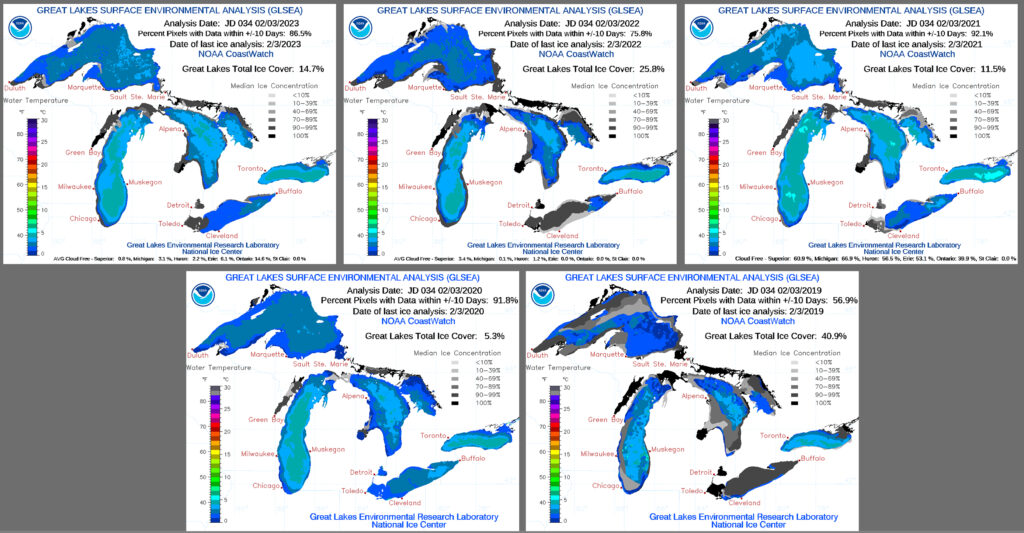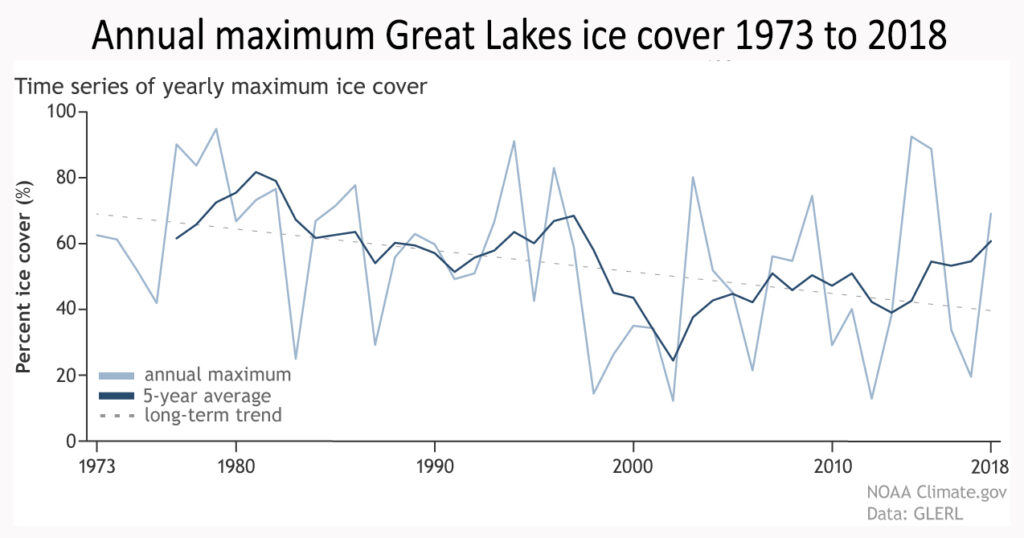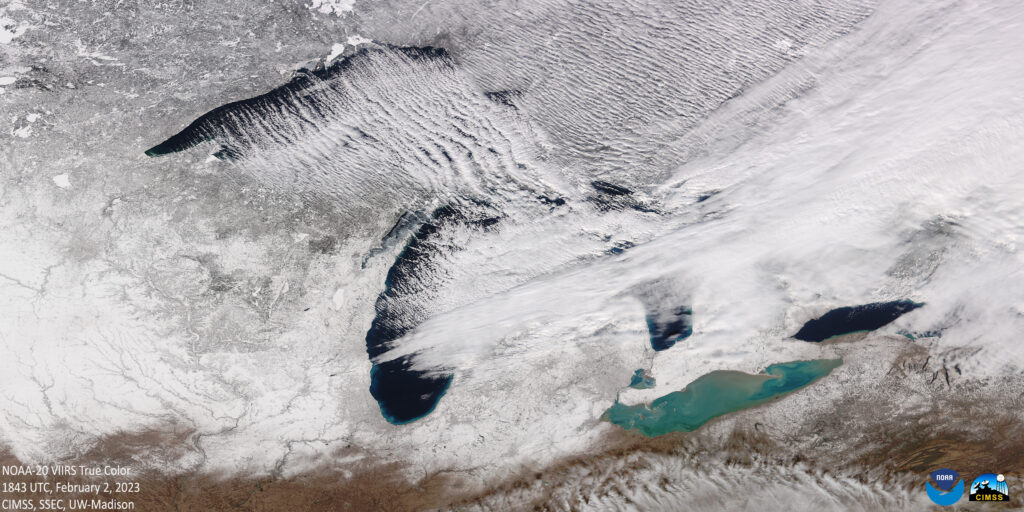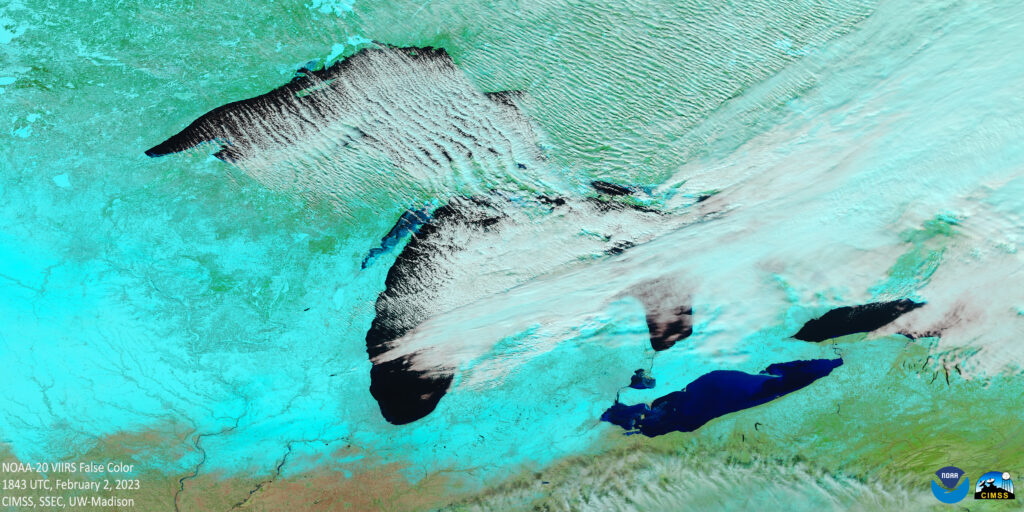Great Lakes Ice Extent
According to NOAA’s Great Lakes Surface Environmental Analysis (GLSEA) the Great Lakes were 11.6% ice covered on February 2nd when an arctic air mass was descending southward over the region. The cold air boosted ice coverage to 14.7% on February 3rd, less than half of the average extent (1973-2022) of 34% for February 3rd. This meant ample open waters for lake-effect clouds and snow, per the 5-hour GOES East animation below.
Ice extent on the Great Lakes is highly variable. In the past five years ice coverage on February 3rd has been as low as 5.3% in 2020 and as high as 40.9% in 2019. Records have been kept since 1973. (Check current conditions via https://coastwatch.glerl.noaa.gov/ice.html)

In spite of wide year-to-year variability, studies show a downward trend in Great Lakes ice coverage since records began.




